
Saloni Sharma, TwoCircles.net
New Delhi: Long before the city awakens, Ansura, a rag picker, begins her climb every morning. With a torn sack slung over her shoulder and a dupatta (head scarf) wrapped around her face, she steps barefoot onto the side of the Ghazipur landfill in the national capital.
The path is steep and slippery. Broken glass hides beneath layers of plastic. Metal scraps poke through soggy mounds of food waste. The air smells of rot and smoke.
Ansura is twenty-three. Married at 16, she has three children. For the last few years, this landfill has been her workplace. She says she has no other work in factories, homes or markets. So she climbs. She climbs because if she does not, there will be no food that night.
Her work is brutal in nature. She picks through garbage to find plastic bottles, broken toys, medical waste, scrap old metal wires or anything she can to sell to the scrap dealers at the bottom of the ‘hill’. On a good day, she earns Rs 300. On other days, even less.
“Some days, the pain in my legs do not let me sleep,” she says, pointing to the rashes and swelling around her ankles. She coughs often. Her joints hurt. Her skin burns. But the climb is never optional.
This is not a place where people should be working. But every day, hundreds like Ansura make their way up Delhi’s mountains of waste, not because they want to, but because there is no other way to survive.
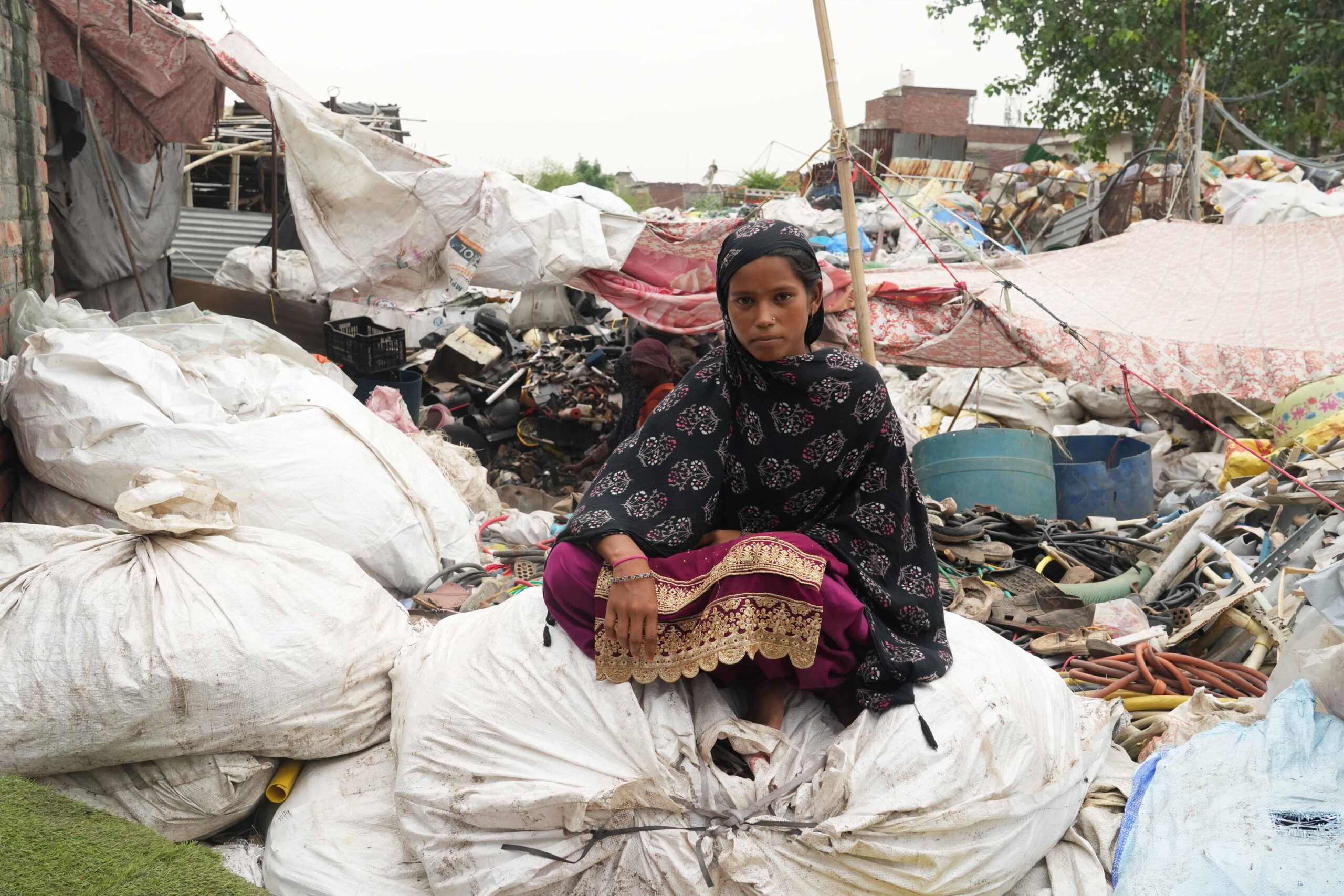
Ghazipur is one of three giant landfills that towers over India’s capital. Along with Bhalswa (Northwest Delhi) and Okhla (Southeast Delhi), these sites are not merely garbage dumps. They are massive decomposing time bombs, slowly leaking poison into the earth and the air.
Each site holds the stories of lives like Ansura’s, women, men and even children who work on mountains of waste. Their work exposes them to danger every single day.
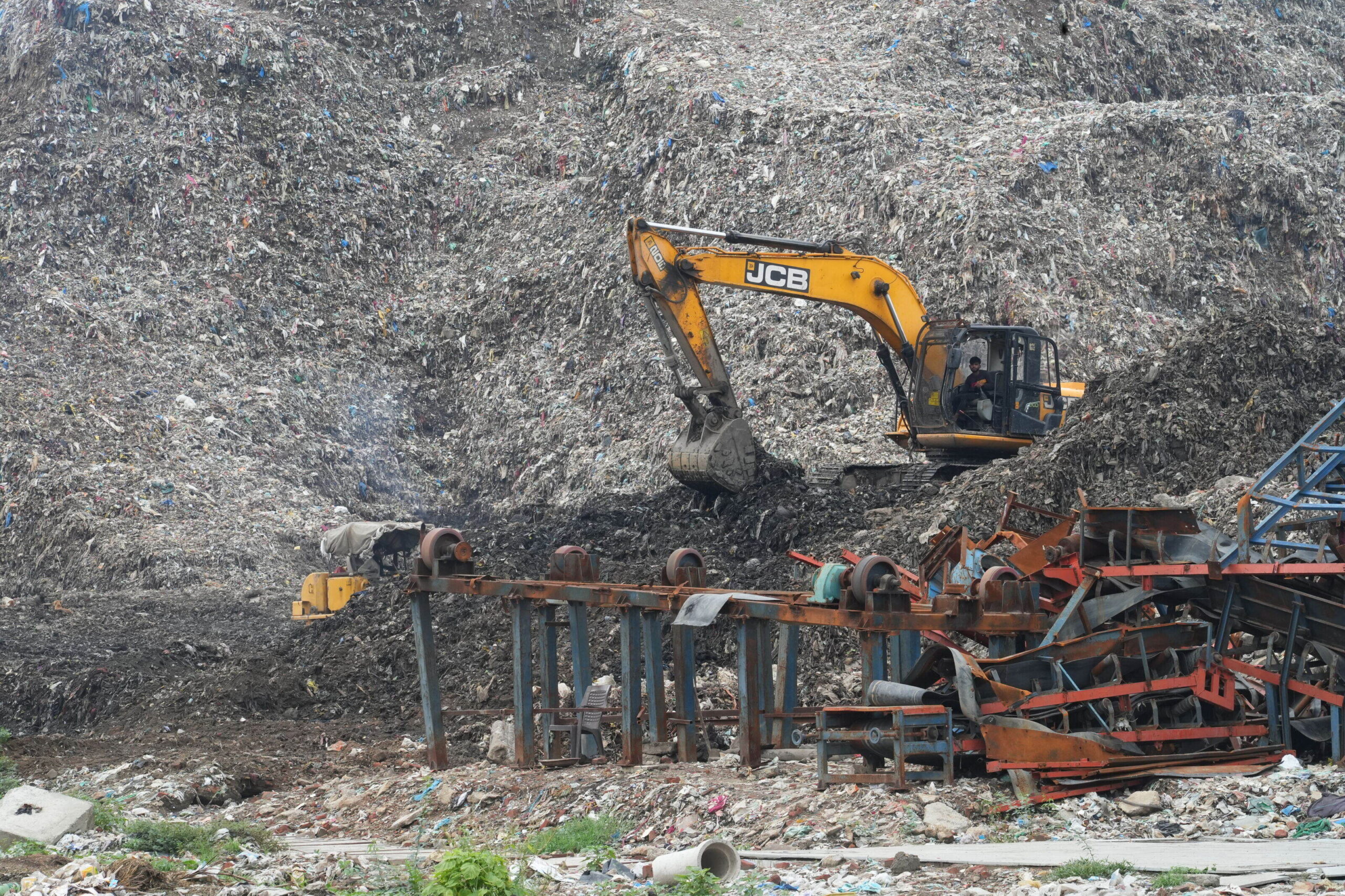
(Photo by Suhail Bhat/ Twocircles,net)
Back in 2016, when India introduced the Municipal Solid Waste Management Rules, there was hope. Waste, it said, should be segregated at source. Landfills should only be used for what cannot be recycled or composted. The National Green Tribunal (NGT) ordered all states to implement these rules “without delay”.
But in Delhi, those rules exist mostly in files and press releases. On the ground, little has changed.
In 2015, Delhi generated over 9,620 tonnes of solid waste per day. By 2020, that number had grown to 11,114 tonnes daily, making it the second most waste-producing city in India. With more garbage came more responsibility. But there is little action.
Ramshree, 38, knows this truth. She has been working at the Ghazipur landfill for over a decade, ever since her husband passed away. Each morning, she climbs the garbage hill, a sack strapped to her back, with her eyes scanning for recyclables.
“There is no other work here. Sometimes, my chest burns, but I still go up,” she says.
Like many others, she has no gloves, no boots and no mask. They have bare hands and firm determination.
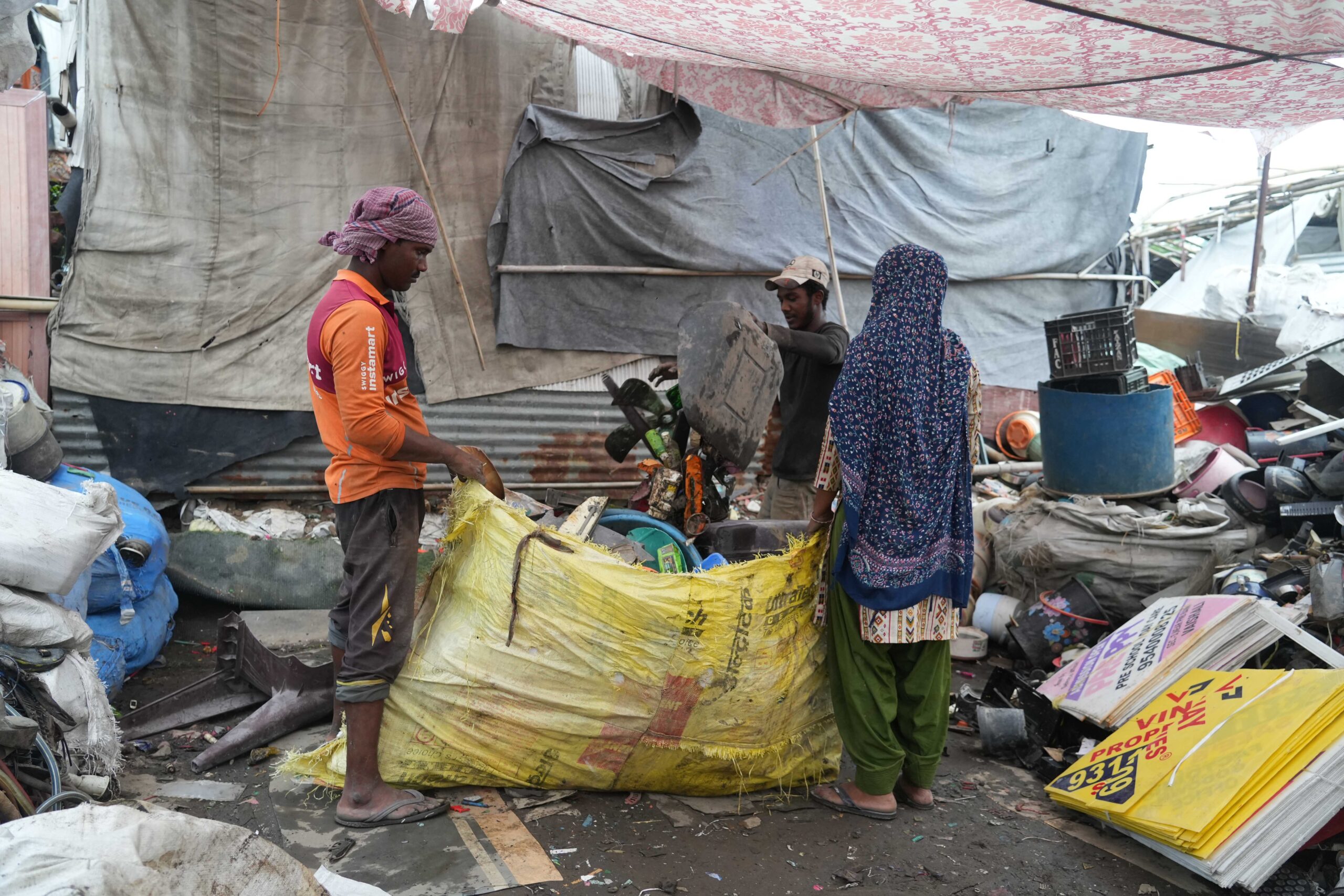
At the Okhla landfill, the story is no different, even though it was officially decommissioned in 2018. By 2023, trucks were still unloading fresh garbage there. Just behind the landfill, at the government-run Employees’ State Insurance Corporation (ESIC) Hospital, staff and patients have complained of sore throats, nausea and persistent headaches.
A few lanes away in Gola Kuan, 84-year-old Raziya Begum has been living in a dim room in Taikhand village for decades. Her daughters are married and have gone to their in-laws’ houses. She lives alone.
“The smell is unbearable in the rainy season. The drains fill with black water. But where will I go?” she asks.
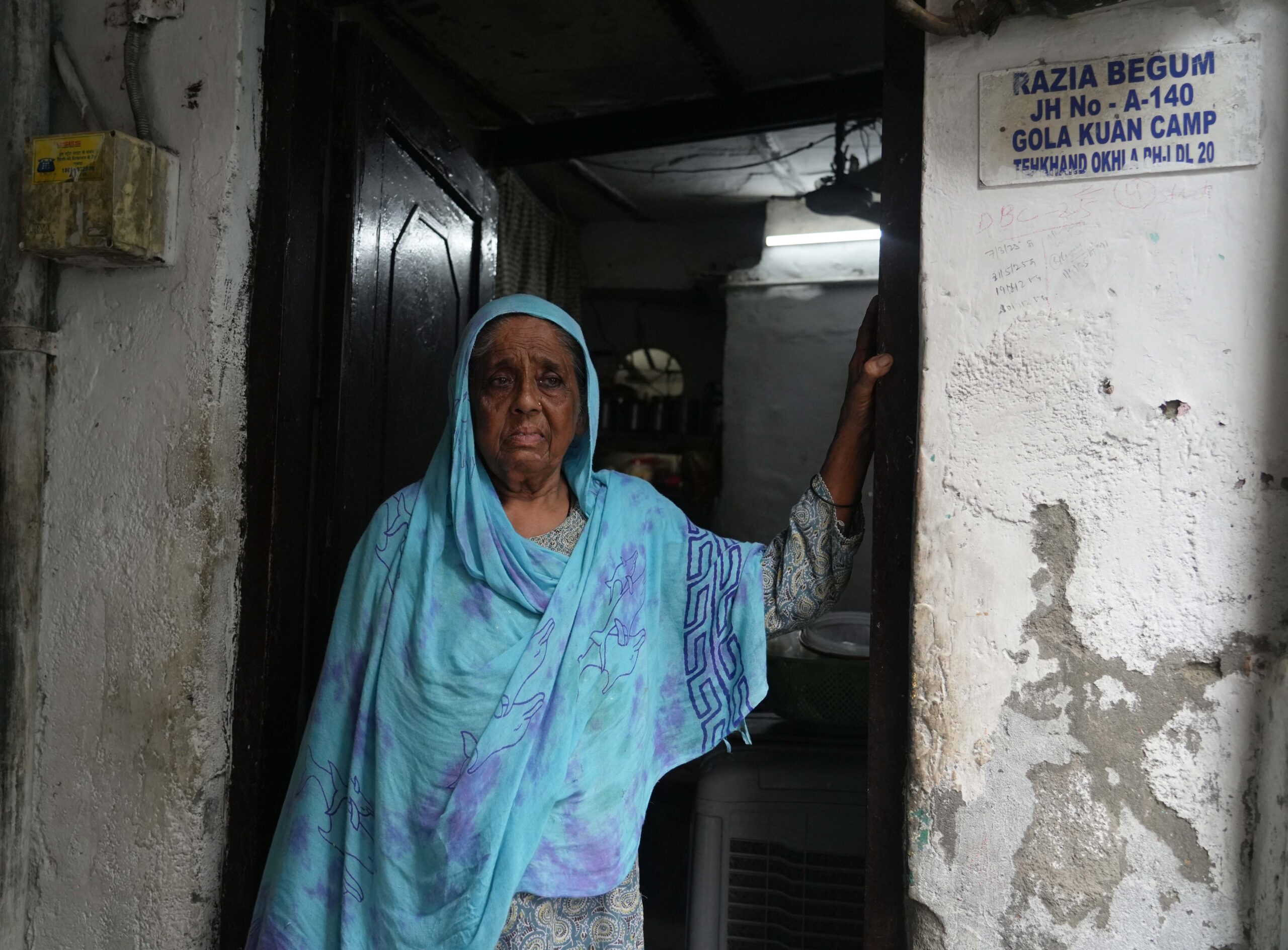
Doctors, who treat patients from these sites, are observing the impact up close. Dr. Yasmeen Abdullah, who treats ragpickers at the Hamdard Institute of Medical Science and Research (HIMSR), says their conditions are “deeply unhealthy”. Most suffer from skin diseases, infections and anemia.
“Women, in particular, are more exposed to hazardous substances. Many experience psychological distress because of the harsh environment they live and work in,” she says.
An environmentalist and a researcher at the Centre for Science and Environment (CSE), Dr. Tribhuwan Singh Bisht calls the garbage mountains “dump sites”, not “landfills”.
“Calling them landfills gives the impression of a managed system. These are Un engineered mountains of waste and a classic example of unmanaged waste disposal,” he says.
What worries him most is seeing children picking through garbage on top of these unstable mounds. “They do not realise they are standing on ticking time bombs,” he warned.
These garbage hills burn, emit methane, carbon monoxide and toxic sludge that seeps into the ground and pollutes underground water. That poisoned water eventually reaches taps and borewells in nearby homes.
Since 2020, satellite data from Kayrros, an environmental intelligence firm, has recorded 124 methane ‘super emitter’ leaks from these dump sites. Invisible and many times more potent than carbon dioxide, methane speeds up climate change as Delhi watches in silence.

Today, Ghazipur dump site stands at 236 feet, as tall as a 20-storey building, and spreads over 70 acres. In April 2024, it caught fire again. Smoke blanketed nearby homes. That November, Delhi’s Air Quality Index (AQI) hit 494, nearly maxing out the danger scale.
The World Health Organization (WHO) once described Delhi’s air as the most polluted in the world. In 2014, it recorded a PM 2.5 level of 153 μg/Nm³, far above what is considered safe.
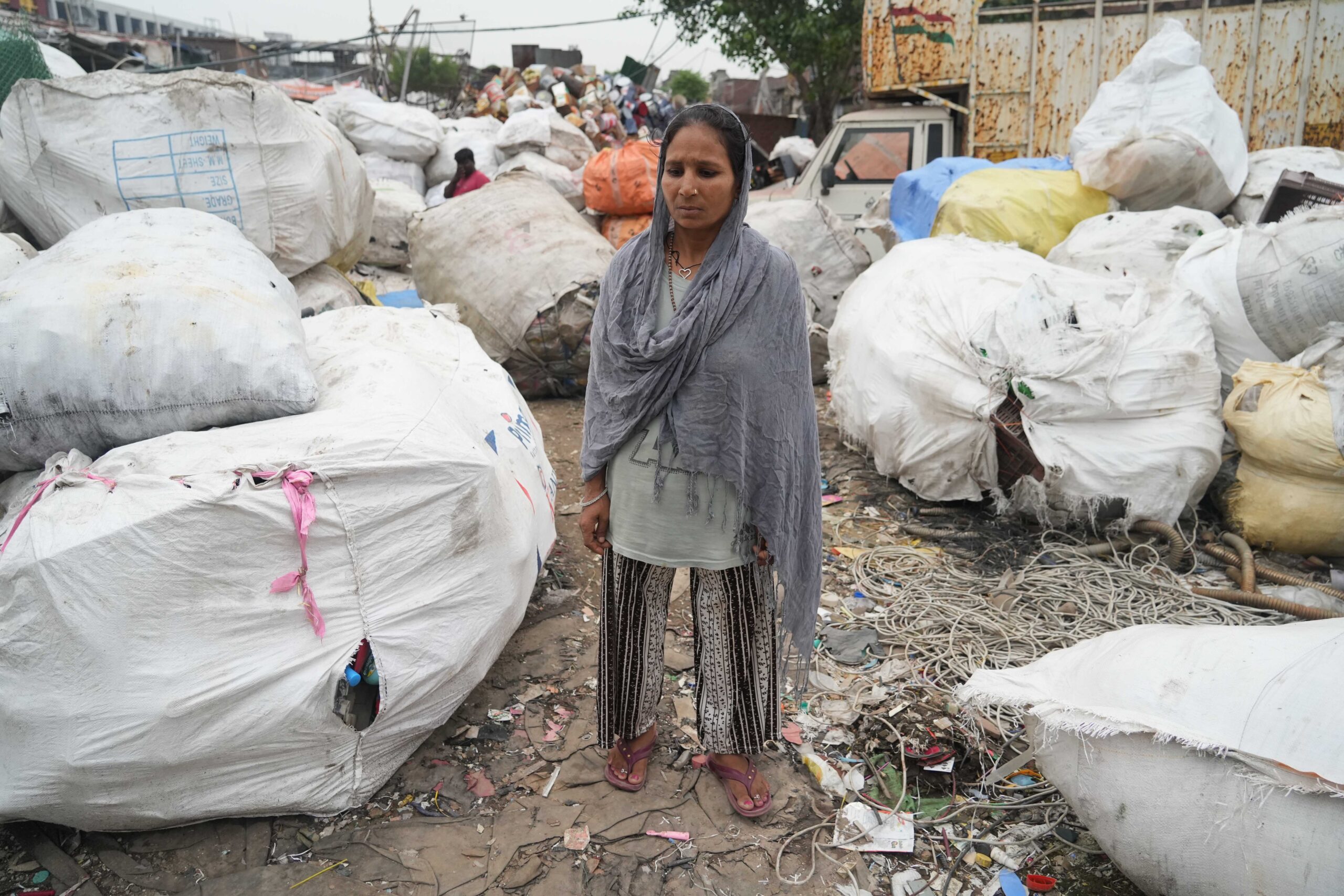
The garbage dumps continue to catch fire. But still, the amount of garbage grows every day, causing the air to thicken. However, the policies remain untouched.
These are not only numbers. They are the breath of a child wheezing in East Delhi, the rough cough of a grandmother near Bhalswa, the silent fear of a woman climbing a burning hill of trash with nothing to protect her feet and broken promises of a “Swachh Bharat” (Clean India) that is smouldering in plain view.
Some cities such as Indore in Madhya Pradesh and Ambikapur in Chhattisgarh have chosen another path. Here, waste is sorted at home, composted and reused. In Ambikapur, a women-led decentralised system eliminated the need for a landfill altogether. Under IAS officer Ritu Sain, the city closed its only dump in 2016 and turned it into a public park.
“The difference lies in two things – political will and social ownership. If Delhi could bring even those two elements into its waste management system, we could solve 90% of the problem,” says Dr. Bisht.
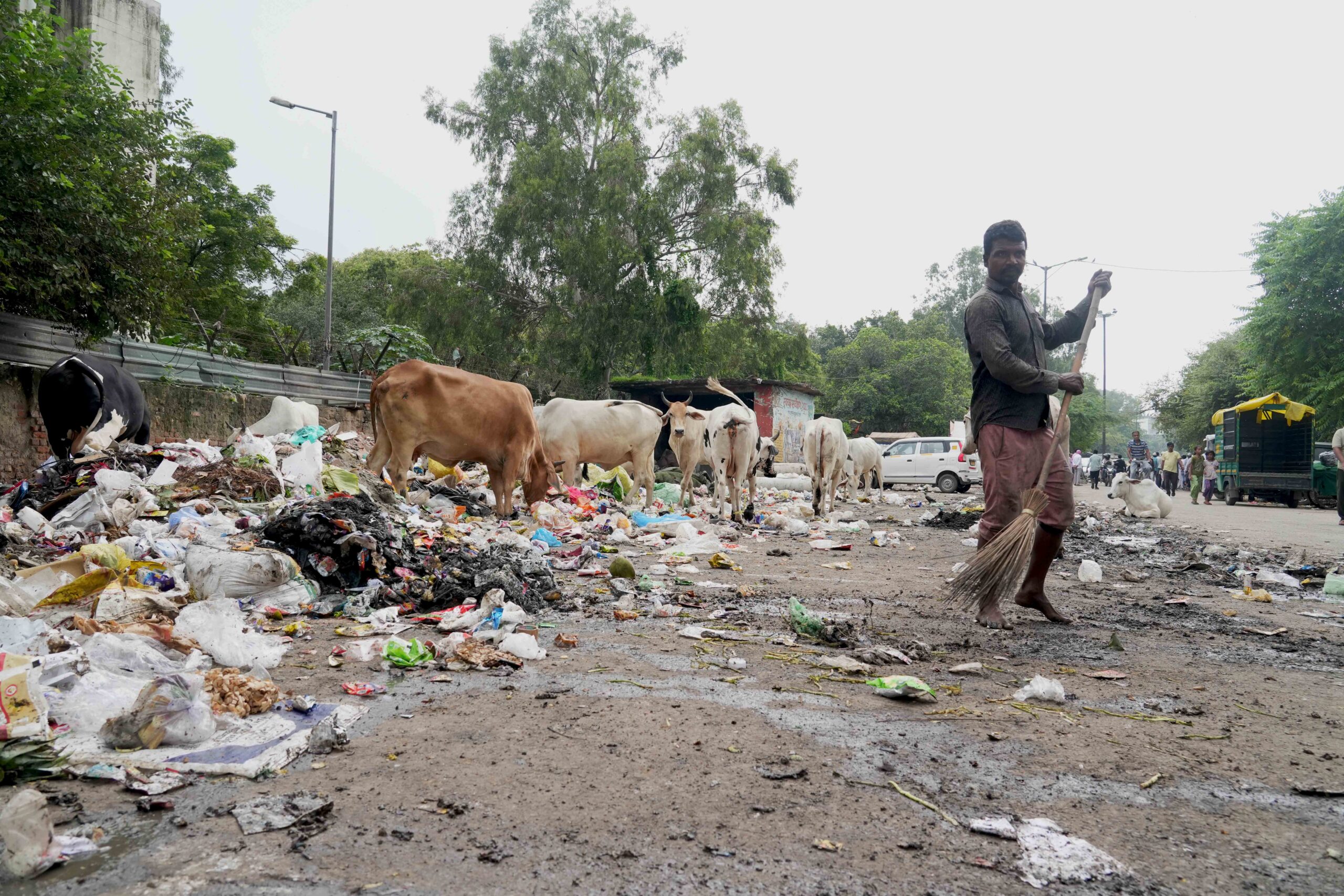
What Delhi needs is not another dumping ground. It needs accountability, awareness and empathy. Ghazipur, Bhalswa and Okhla mounds are a mirror to show us what we have allowed to grow and what we have chosen to ignore. Unless the city changes that, these mountains will continue to rise in height as well as in consequence. And one day, they may no longer burn silently.
The author acknowledges the support of Suhail Bhat for accompanying her while doing this ground report and for the photographs.

